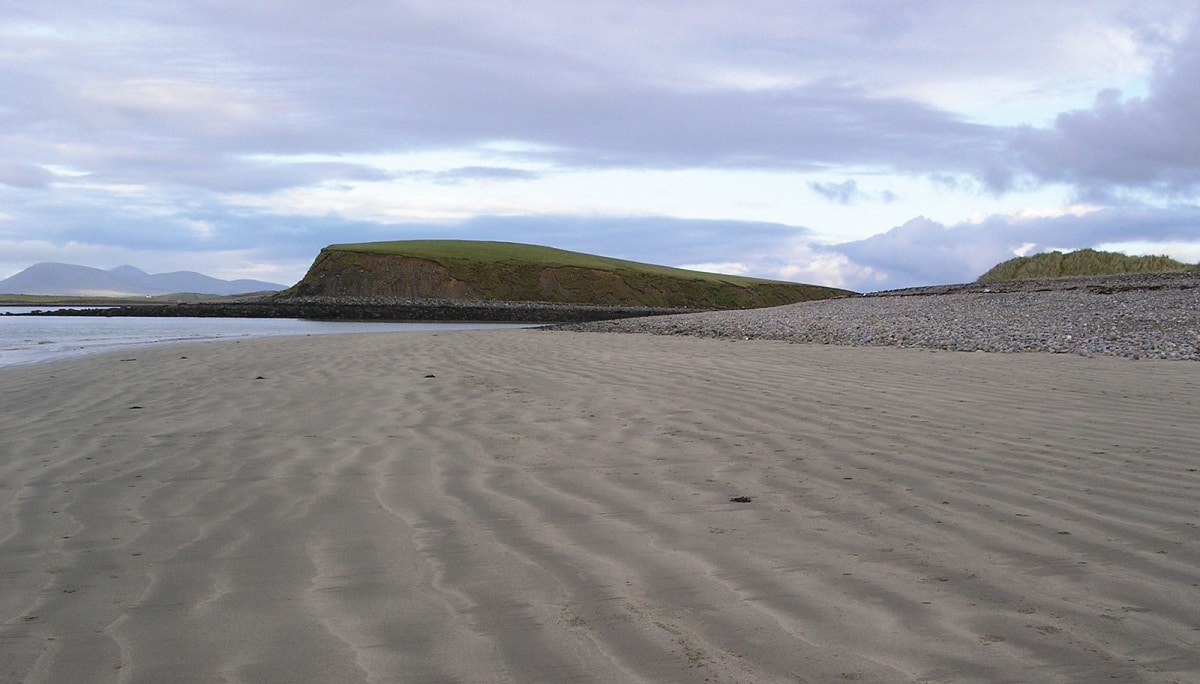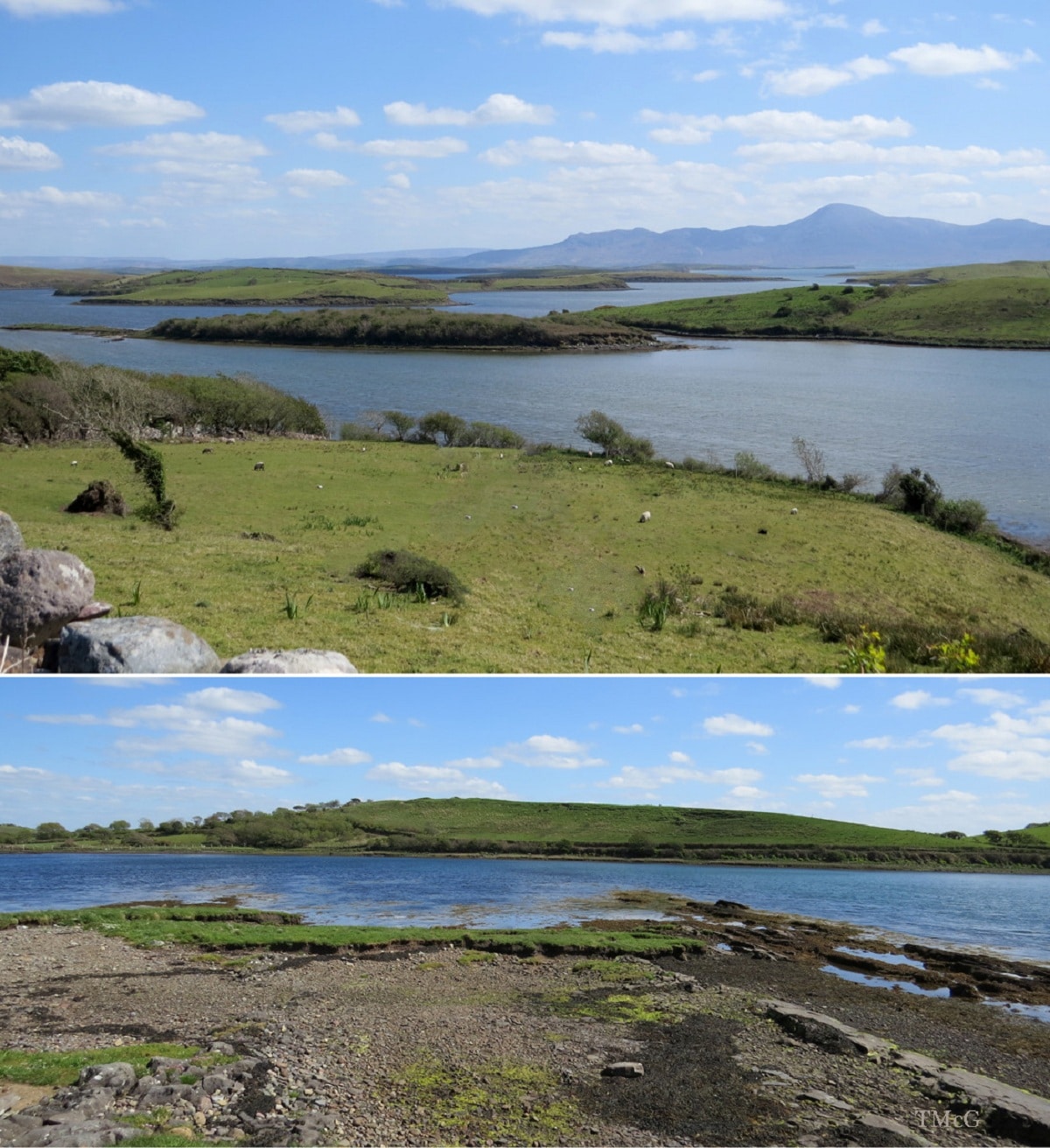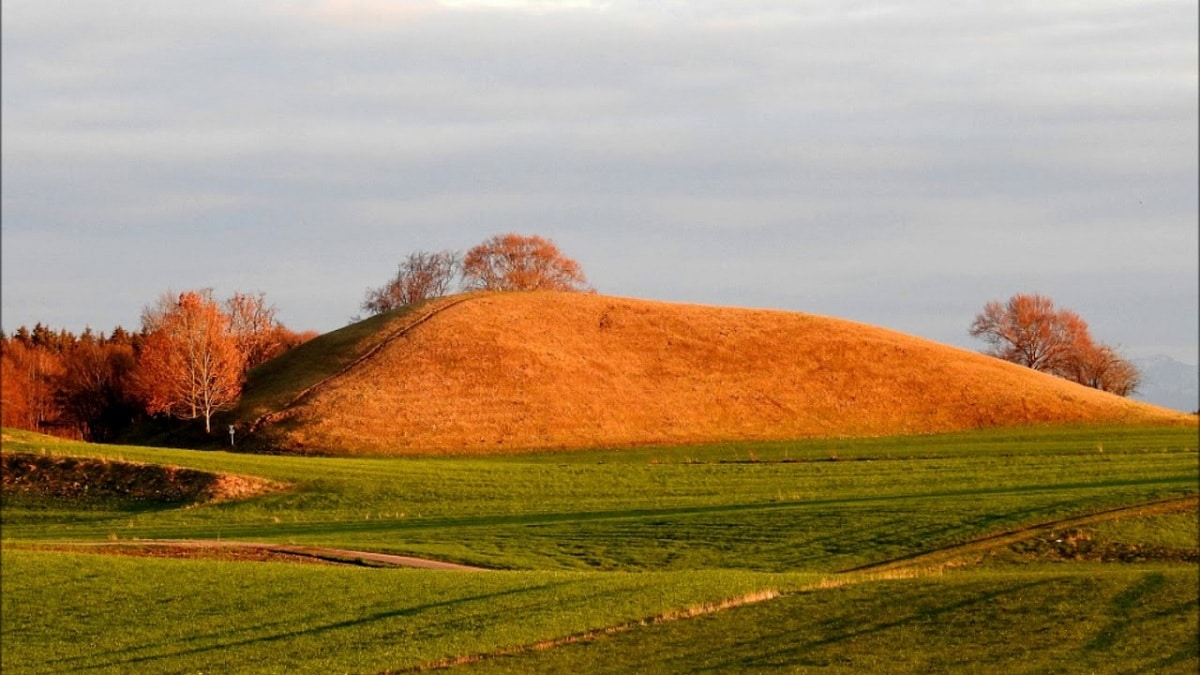
Today we are going to talk about a type of geological formation that is formed from the glacial relief. Its about drumline. This name comes from the Irish "droim" or "drim" and means "crest of a hill". Its formation comes from the glacial reliefs and it is nothing more than a small mound with smooth slopes that is shaped like a lying whale. They are generated from the modeling of a glacier in the direction of ice movement in times of glaciation.
In this article we are going to tell you all the characteristics, training and curiosities of the drumlin.
Key features

We are talking about a type of small mound that is composed of smooth slopes. The smooth slopes have this texture since the ice of the glaciation and the periods of thaw causes erosion by abrasion. The shape of the drumlin is that of a lying whale and is generated by the direction of movement predominantly carried by ice during ice ages.
Because the drumlin is found next to the moraine deposits, they are considered as formations from a moraine that is generated at the bottom of a glacier. Moraines are the set of glacial sediments that accumulate on the sides of a glacial structure. They can appear in isolation but it is more common to find in groups such as occurs in the Chilean Patagonia area. And it is that the set of sediments that form the moraines are moving in the direction of the ice with the prevailing wind. We know that ice also has its own movement depending on the slope and the periods of ice age.
Formation of a drumlin

Let's see what is the process by which the drumlin is generated. We know that they are part of a landscape that is shaped by the action of a glacier. There are numerous debates about the origin of the drumlin, although the theories most affected are the following:
- It is the product generated through a flood under a glacier. This alluvium is capable of transporting a lot of material at a single moment and accumulates in the channels of the sub-ice. These channels are where the water flows, which freezes, but from the lower part also continues in a liquid state. We know that the ice is stuck to the sediment but it is not completely frozen. The lower part of the ice that is rotating the sediments and the ground is usually in a liquid state and is responsible for the movement of the ice.
- Formed by a very large glacial ice sheet that was gradually scratching the earth's surface. When we refer to scratching the earth's surface we are referring to a type of erosion called abrasion. Abrasion is the process that is generated through the dragging of sediments and the weight of each one. In other words, when ice creeps across a surface, it generates abrasion due to its structure and the soil is eroded and has a smooth texture.
The formation of a drumlin is associated with the type of material that makes up these hills. And it is that the permeability of the sediments seems to play an important role in the molding process. If the sediments that are under the ice accumulated through the snow seasons are permeable, it is more difficult for it to be washed since it is going to filter.
Drumlin materials

Let's see what are the main materials that a drumlin was made of. The first of all is to know what is composed of glacial mud. This glacial mud is known by the name of till. It is a mixture of clay, sand and gravel that have angular edges and sometimes have blocks of rocks. The glacier drags and pushes these materials and deposits them at the bottom. In this way, it was the material available to be transported by a low glacier alluvium.
Sometimes the sediment can form a drumlin generated by the movement of water through the rivers that circulate under the ice. As we have mentioned before, under the ice sheet is a layer of water in a liquid state like a river. In very few occasions the ice is completely frozen in its entirety. Especially in the melting season, the part that turns into a liquid state the fastest is the internal part of the ice. In this case, when the drumlin is formed by The rivers that circulate under the ice are composed of pebble gravels.
Forms of accumulation
Since the last ice age, approximately 18.000 years ago, the ice has receded, revealing inherited reliefs throughout the extent that it occupied during the last ice ages. That is to say, through the time of the thaw and the reduction of the surface covered by it, it reveals a relief with glacial modeling.
The glacial deposits known as till are sediments composed of materials deposited directly by glaciers. These materials do not have stratification and their fragments show striations as a result of displacement and friction with the ground. The moraines are formations composed of tills that accumulate on the sides of the glaciers. If the glacier recedes a layer of wavy-shaped tills called the basal moraine is deposited. Once it continues to retreat, the front can stabilize and form a retreat moraine.
Lateral moraines tend to be more typical of valley glaciers. They are in charge of transporting all sediments along its margins and are deposited with long ridges. When the lateral moraines are joined by the confluence of two valleys, a central moraine is formed.
Finally, once the sediments have been deposited outside the glacier surface and blown away by the wind and the action of other geological agents, the drumlin is formed. There are other geomorphological formations that are the result of the glacial relief and which are composed of stratified debris and are the kame, kame terraces, and the eskers.
I hope that with this information you can learn more about the drumlin and its characteristics.